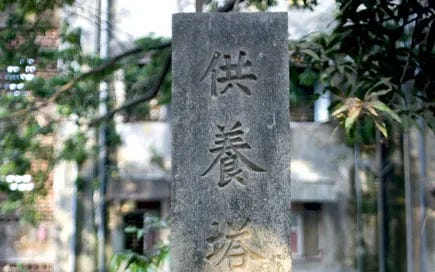What Colonial Cemeteries Reveal About British India's Forgotten Immigrants
Words by Azania Imtiaz Khatri-Patel
A Desi MMA fighter destined for greatness must face his biggest rival yet: himself.
The Martial Artist hits Theaters on APRIL 4, 2025, across NORTH AMERICA, the UK, SOUTH AMERICA, and more.
What Colonial Cemeteries Reveal About British India's Forgotten Immigrants
A couple of years ago I took a theatre class at my undergraduate university. At some point we did an exercise involving haikus, I forget what the exercise was, but the words on the notes I pulled remain etched in my memory.
“That Winter when my Faithless Lover Left me,
How cold the snow seemed!”
—Jakushi
Haikus are poems made of 17 syllables - following a rigid pattern and come from Japan. When I read these lines in translation, in a humid Bombay classroom, I did not know if there was anything in common between the land of the rising sun and my coastal concrete jungle other than the universal chill of heartbreak. However, I would soon discover that Mumbai or Bombay as it was then known had once been home to a thriving Japanese community. As a port- it had attracted businessmen and traders- adding to the city’s already cosmopolitan tapestry in colonial times. This trade came to an abrupt halt with the second world war- and redrawn geopolitical alliances. The nascent Japanese community left the port city from the same shores they had entered it.
All that remains from this chapter in colonial Bombay’s history is a largely forgotten cemetery.
In a desolate corner, behind the Hindu crematorium on Dr. Moses E. Road, lies Mumbai’s only Japanese cemetery. Built in 1907 and with its last burial in 1977- the cemetery is a place of grief and loneliness. It is a place of heartbreak and rumored hauntings as it sees few living visitors. There is an additional nuance to this lost community – most shrines in the cemetery, it is believed are shrines to sex workers.
With the cotton trade booming between Bombay and Japan – officers from the Raj brought a number of Japanese sex workers to the city. While traders and merchants came in and out of Bombay, returning home to families and communities at will and with the force of the pacific tide- the sex workers where marooned upon the foreign island. What agency can we imagine these women to have? With no access to local knowledge or resources or a community- they came to Bombay for the pleasure of others, died in anonymity, were cremated and buried in place where there was no one to mourn them.
Is anything more poignant than a graveyard of forgotten women?







